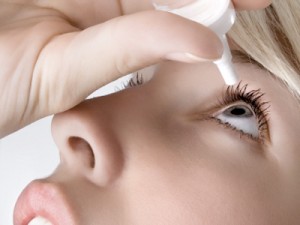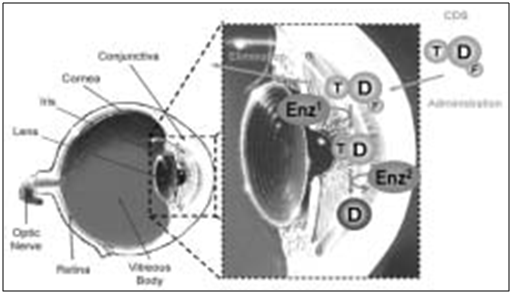OPHTALMIC PREPARATIONS
I- EYE DROPS
* Eye drops are sterile aqueous solutions or suspensions intended for installation into conjunctival sac
*They may contain antimicrobial agents, ant-inflammatory agents, mitotic drugs, or mydriatic agents
STERILIZATION of OPHTALMIC PREPARATIONS
-Many of drugs used in ophthalmic preparations are heat labile and so, there are three main methods for sterilization:
1- The drug is dissolved in aqueous vehicle containing a suitable preservative → filtration→ transferred to a final container which is then closed to exclude microorganisms→ autoclaving at 120 °C for 10 min
2- The drug is dissolved in aqueous vehicle containing a suitable preservative→ filtration→ transferred to a final container which is then closed to elude microorganisms → sterilized at (98°C) for 20 min
3- The drug is dissolved in aqueous vehicle containing a suitable preservative→ filtration→ transferred under aseptic technique to sterile container which is then closed to elude microorganisms
This method is applicable for heat labile drugs.
PERSERVATIVES IN OPHTALMIC SOLUTIONS
* Should be effective against a wide range of M.O
* Should be non irritant
* Should be non toxic
* Should be compatible with the drug encountered in the preparation
* Should be stable all over shelf life
* Should be stable during sterilization
* Should exert no interaction with the container
Examples:
- Phenyl mercuric nitrate (PMN) 0.002%
- Phenyl mercuric acetate (PMA) 0.002%
- Chlorohexidine acetate (CA) 0.01%
- Benzalkonium chloride (BC) 0.01%
NOTES ABOUT PERSERVATIVES
1-Phenylmercuric nitrate (PMN) and Phenyl mercuric acetate (PMA) are not suitable for eye preparations intended for long term use (ex glucoma) due to deposition of minute trace of mercury in lens leading to lens opacity
2- Benzalkonium chloride is unsuitable for use in eye drops containing local anesthesia because local anesthesia reduces blink reflex. On the other hand Benzalkonium chloride by its detergent effect
Remove the protective oily layer (miebomian oily layer) from precorneal film, this protective oily layer is only restored if the blink reflex is normal so if blink reflex is reduced by BC Loss of oily layer loss of lubricant effect keratitis (inflammation of cornea, corneal ulcer)
3- Other preservatives are recommended to be used in above situations for examples parbens
(Methylparbens and propylparbens) are prepared to be used in eye preparation used for glucoma or containing anesthesia.









.jpeg)






.jpg)


.png)
